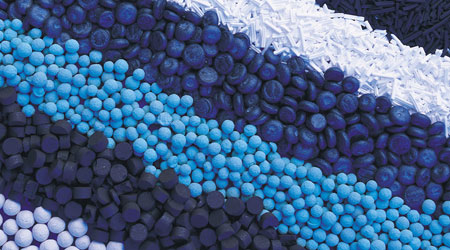Method and conclusion of CO generation (2)
Catalytic dehydrating with solid catalyst
Catalytic dehydrating method has many disadvantages, such as large concentration of H SO, high production cost, troublesome post-treatment and unease. The former Soviet scientists first proposed the use of solid acid catalyst instead of concentrated H SO. Since then, many scientists, including those in China, have studied the synthesis of CO with solid acid catalyst and made some progress. But so far, no large-scale production has been reported. The self-made solid acid catalyst was used in small and pilot tests by Guangming Chemical Research and Design Institute of Chemical Industry. The purity of CO produced in the small test is better and the conversion rate is also high, but the amount of H in the medium test CO product is higher (about 10%). Because the physical and chemical properties of CO and H: are very close, it is necessary to use PSA (pressure shift adsorption) or low temperature purification process to produce high purity ~ oxide carbon by this process. Therefore, how to improve the selectivity of catalyst is an urgent problem.
Scientists of polish academy of sciences institute of organic chemistry, common to the variety of the catalyst was carried out under different conditions of catalytic dehydration test, from the point of the result, the dehydration effect is ideal, but it is only the preparation of laboratory scale, larger scale into been reported Also conducted a similar study in a university in our country, but on the relationship between the use time and activity of catalysts (performance) on the conversion rate were cast to do any research. Researchers at the Guangming Research and Design Institute of Chemical Industry of the Ministry of Chemical Industry found in small and pilot tests that the selectivity of solid acid catalysts at both the initial and later stages of the reaction was inferior to that at the middle stage. And the results of the small test and the pilot test are very different. Therefore, the service life and amplification effect of solid acid catalyst are the key points of research. Japanese scientists have studied the dehydration of solid acid at lower temperature, and carried out acid coating tests on 12 different kinds of inorganic salt carriers. The results show that the selectivity of the catalyst is high. The activity of the catalyst was also tested for 1OOH. Unfortunately, the scale is too small, can carry out large-scale application, or unknown. The coating process of catalyst is to impregnate the inorganic carrier 10 IN sulfuric acid with In concentration and let it stand for 30min. After filtration, the catalyst was dried at "0"C for 12 h, and then forged and burned at 550℃ for 3h. The SO. The content was 0.5 ~ 3, which was converted by S. Using benzene as solvent, the acid strength was determined by titration method. The results show that the strength of these solid acids is strong acid type.
At atmospheric pressure, the solid catalyst prepared above was used as the dehydrating agent, with a temperature of 88 (12 H). O) industrial formic acid as raw material, the reaction temperature was 100℃, and the activity of the catalyst was evaluated under the condition of LHSV(liquid space velocity) h. The results show that the catalysts have good selectivity. The content of CO in the reaction gas is 45 ~ 5O, H ~ 45 ~ 50, H: O ~ 3, CO: O ~ 3.
It can be seen from the above results that solid acid catalytic dehydrating method is a very promising CO generation method, which has the advantages of low production cost, less equipment investment, simple operation, no pollution and so on. However, at present, solid acid catalyst has some shortcomings such as unstable activity, the generated CO contains a certain amount of H which is difficult to separate, and formic acid is easy to produce carbon evolution reaction on the surface of catalyst. Therefore, to achieve large-scale production, still need to carry out a lot of research.
Solid catalyst
Conclusion
1. Strong H SO. The purity of CO produced by catalytic dehydrating method is high and the method is very mature. However, the production cost of C0 is high, and the waste liquid generated is not easy to be used, and the reaction rate decreases with the decrease of the concentration of H SO.
2. Charcoal dry ice reduction method, the raw materials used are cheap and easy to obtain, the cost of CO generation is quite low, suitable for low purity and too large scale production, but the process of equipment, instrument requirements, one-time casting. Not suitable for medium and small scale CO production.
3. Solid acid catalytic dehydrating method, overcome the liquid concentrated H. The shortcoming of SO catalyst is that it is a promising CO method, but from the present situation, the method has some shortcomings such as unstable activity and poor selectivity, which needs to be improved and developed continuously.





 Facebook
Facebook YouTube
YouTube LinkedIn
LinkedIn Twitter
Twitter